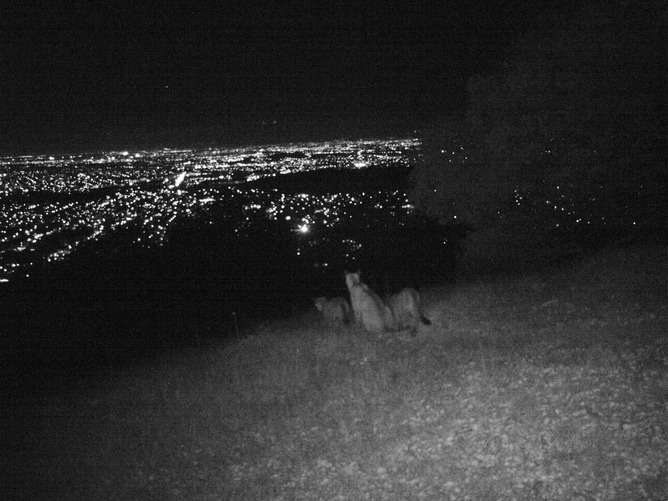How humans threaten pumas just by being nearby

You are wandering in the forest where you live, thinking about what you are going to have for dinner. Among the familiar calls of chickadees, you hear a foreign sound. You crouch in hiding, frightened for yourself and your family. Not until nightfall does the noise abate, allowing you to move again under the cloak of darkness. Soon you learn that the sounds come from unfamiliar beings taking over your homeland. You learn to live in hiding, believing that as soon as you let your guard down you may pay the ultimate price.
This is not the premise of a zombie apocalypse movie. It is the story of human expansion into wild places, where the wildlife that coexists with us often lives in chronic fear of humans.
Disturbance by humans changes the behavior of animals near towns, along roads and in areas that we use for mining, energy development and recreation. Although conservationists are starting to consider how the presence of humans affects the behavior of some species, they rarely analyze how these changes in animals' behavior affects entire ecosystems. In my research examining pumas, or mountain lions, in California, I've found that our presence alters how they hunt for deer, which can have a significant effect on the ecosystem overall.
Fear factor
Fear is a powerful force in ecosystems. For decades, ecologists have acknowledged that fear can dictate when, where, and what animals eat, what habitats they use and how they communicate with one another. These behavioral changes in animals are ecologically important because they can change interactions among species. Although many animals are known to respond fearfully to their predators, we are only beginning to understand how humans elicit the same responses in wildlife.

In the Santa Cruz Mountains of California, I am studying how fear of humans in a top predator, the puma, resonates throughout the ecosystem. The Santa Cruz Mountains are isolated from other natural areas, bordered by the Pacific Ocean on the west, the San Francisco Bay metropolitan area on the north, and a major highway on the east. Like many places across the country, this region is dotted with residential developments and land utilized for mining and logging. However, it also contains open space preserves and state and county parks that provide important high-quality habitat for wildlife.
This kind of multi-use and fragmented landscape is increasingly becoming the norm in places where humans encroach on wild lands. To keep developing areas as wild as possible, we need to conserve natural animal behaviors and relationships.
Scaredy cats
With my colleagues at the Santa Cruz Puma Project, I am studying how human disturbances indirectly affect the behavior of pumas, the last remaining large carnivores in our region that roam the ravines between ridges lined with houses. We have found that pumas attempt to avoid people, but their sensitivity to disturbance depends on what the cats are doing. Although pumas consistently travel and kill prey relatively close to human developments, they make their dens and communicate with each other through scent marking in areas far from zones that humans have altered.
In many types of ecosystems, researchers have observed that animals will avoid feeding opportunities when they fear a predator. To see whether the presence of humans was having this effect on pumas, I examined behavioral changes at kill sites in areas of the Santa Cruz Mountains with varying levels of human activity. To find these kill sites, our team tracked GPS-collared pumas using their locations and searched for prey remains. I then used data from the GPS collars to learn how behavior at these kill changed near human development.
Surprisingly, I found that pumas often kill deer near human residences. However, unlike in wild areas where pumas stay close to their kills for a few days while they feed, pumas in developed areas leave their kills and move away from humans to rest, returning to feed only after dark. This causes pumas to waste energy by spending more time on the move, while losing opportunities to feed on their kills. Moreover, pumas that hunt in the most disturbed areas kill 36 percent more deer than pumas in the most rural areas. We believe that pumas ranging near developed areas kill more deer because they cannot fully consume their prey while also avoiding interactions with humans.
Our study provides evidence that the presence of humans not only changes the way top carnivores behave, but also indirectly impacts other species. Pumas that are afraid of humans but still hunt in residential areas alter their relationship with deer, their primary prey. Greater pressure on deer could possibly provide more food for scavengers or reduce deer browsing near developed areas.
Our work provides just one example of the cascading effects that human disturbance can cause in wild ecosystems. Human presence can fundamentally alter the ways in which species interact, which changes the function and composition of the animal community. By considering how humans impact the behavior of important species, we can develop conservation solutions that preserve entire functioning ecosystems.
Source: The Conversation
This article was originally published on The Conversation. Read the original article.
![]()





















